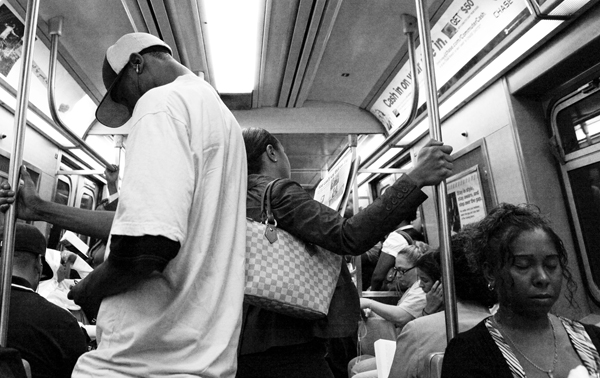Bronx
MTA Cuts Mean Bigger Crowds, More Problems
Jake Mooney |
Transit cuts don’t just mean fewer trains. There’ll be less room on trains that are running. And that could compound other problems underground.

Commuters ride the A train in Brooklyn near the end of peak hours.
Transit cuts don’t just mean fewer trains. There’ll be less room on trains that are running. And that could compound other problems underground.
The Port Richmond Water Pollution Control Plant is designed to handle 60 million gallons of sewage per day. Photo by: Marc Fader
Projects to upgrade a sewage plant and construct a cement facility open the next chapter in a complex—and controversial—industrial history. By: Jake Mooney
The Port Richmond Water Pollution Control Plant has stood on Staten Island’s North Shore, purifying the sewage of about half of the island’s residents, for 57 years. Soon it will get a $29 million upgrade, thanks to a citywide infusion of federal stimulus funds. It will also get a new neighbor, a transfer station about a mile down bumpy Richmond Terrace where cement will arrive from South America by boat and head to local construction projects by truck.
Richmond Terrace, the bumpy former cow path that is the main road along Staten Island’s North Shore, starts at the St. George Ferry Terminal and winds past dozens of storage lots, old factories, transfer stations, high sheet-metal fences and, occasionally, a park. Six miles later, just east of the Goethals Bridge, it reaches its end among heavy trucks and stacked shipping containers at the Howland Hook Marine Terminal.The port, operated on public land by New York Container Terminal, a private company, is one of Staten Island’s largest businesses. The company, officials said, has a $53 million payroll and more than 550 employees, unloading around 400,000 shipping containers a year. But that, company officials and their allies in government say, is not big enough.
Once, 170 years ago, there was a factory on Staten Island, and the factory made lead. Some of the lead got into the ground. In the 1920s the factory caught fire and burned down. The lead stayed. 60 years later, people from the Environmental Protection Agency came to see about cleaning the lead up, but they couldn’t find it; the property owner had given them the wrong address.
A New York State bill that would prohibit doctors and other health professionals from participating in torture or mistreatment of prisoners is edging its way toward passage, which would make it the first state anti-torture law of its kind in the country.The bill, known as the Gottfried-Duane Anti-Torture Bill, seeks to formally prevent health professionals – including doctors, pharmacists, therapists, nurses and more – from any involvement in torture, including direct participation, evaluating prisoners to develop interrogation strategies, and hiding or ignoring evidence of mistreatment.The proposed law makes the consequences for participating in prisoner mistreatment explicit, said Dr. Allen Keller, an associate professor of medicine at New York University School of Medicine and director of the Bellevue/NYU Program for Survivors of Torture. “We like to think of those who would torture as two-headed monsters, but I think it’s actually easier for these things to happen then we’d like to think,” he said. “This gives doctors the fallback to say, ‘I can’t do that, because I could lose my license.’”In April 2009, the federal government released reports documenting the involvement of physicians in “enhanced interrogation,” the label the Justice Department and Central Intelligence Agency applied to waterboarding and other controversial techniques used to obtain information from detainees. “Whether you think waterboarding is ‘enhanced interrogation’ or torture, we should not be sending young people to medical school and giving them a license to practice healing so they can help a CIA agent or prison guard inflict pain and suffering,” said one of the bill’s sponsors, Assemblyman Richard Gottfried, a Democrat representing District 75, in Manhattan.The bill passed the Assembly’s Higher Education committee last week, and is now before the Codes committee. In the Senate it is before the Health committee, of which the bill’s other sponsor, Senator Thomas Duane, also a Democrat from Manhattan, is the chairman.
The contaminants in Hudson River waters include PCBs, mercury, cadmium, various insecticides, and dioxins and furans – which can come from incinerator smoke and car exhaust.
The ad would have cited the hypocrisy of arresting users when nearly half of all New Yorkers, including Bloomberg, have tried the drug.
The City Council might require buildings that receive tax breaks to pay their staff higher wages. The real estate industry opposes the idea. Where does the mayor stand?